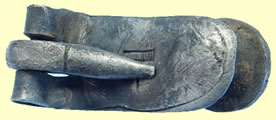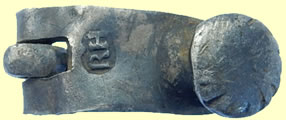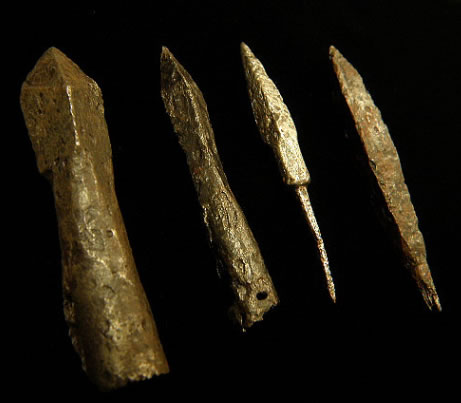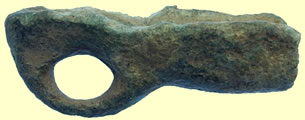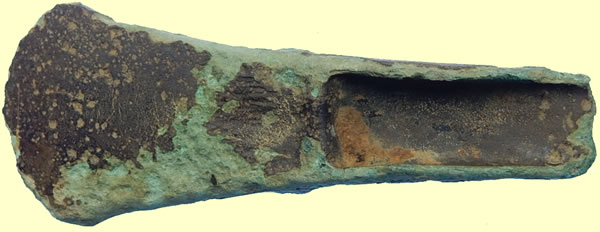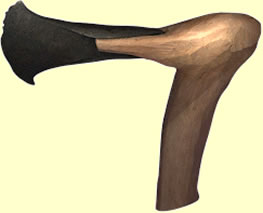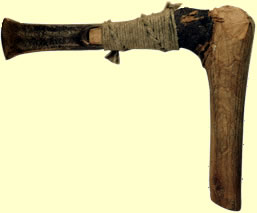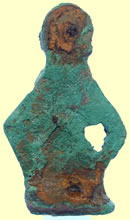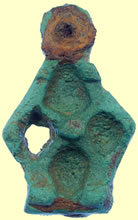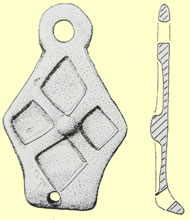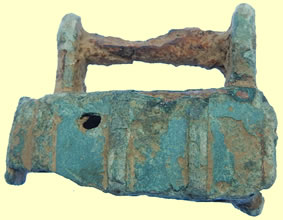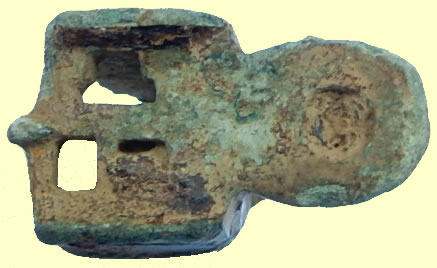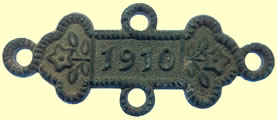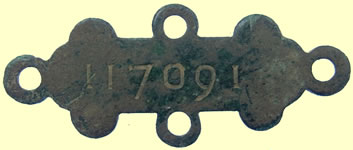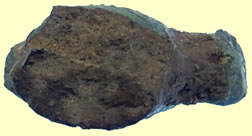

Metal detecting holidays in England with the World's most successful metal detecting club.
Twinned with Midwest Historical Research Society USA
| 2014 Oct finds page |
 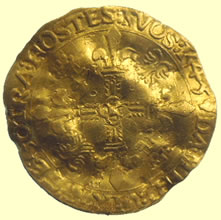 |
|||||||
1544 Netherlands - Holland solar crown - Gold Dutch solar crown of Charles V, Emperor of the Holy Roman Empire, Count of Holland (1506-1555), etc., 0929 Au, 3.41 g, ø 26 mm, value 42 pence, R1, mint mark Canopy (Dordrecht) 42 stuivers Obv *CARO:D:G:RO.IMP.HISP.REX.DVX.BVR.BR Rev 1554*DA:MIHI:VIRTVTE:COTRA:HOS TES:TVOS: Guelders cross 3.41g,25.5mm
|
|||||||
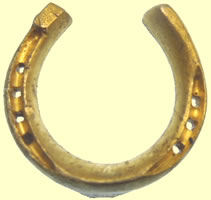  |
|||||||
Chunky Victorian 18 carat Gold horse shoe brooch - no hall mark so probably continental 4.95g, 20mm dia |
|||||||
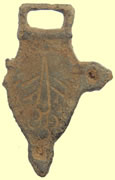 |
 |
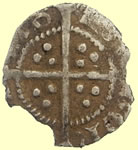  |
|||||
| 17thC clothing fastener | 15thC lead token | 1399-1413 Henry V hammered silver half penny - trefoil and annulet by hair - Type 11 Obv + hENRICxREX :ANGL' Rev CIVI/TAS/LOND/DON |
|||||
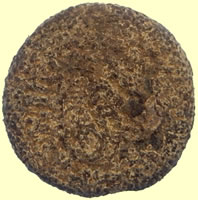 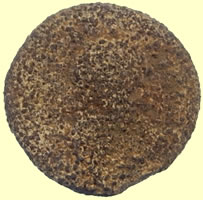 |
|||||||
| 2ndC Roman silver coin - needs cooking to ID | |||||||
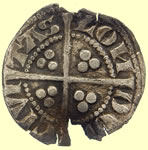  |
 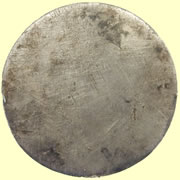 |
||||||
1279 Edward 1st hammered silver penny Obv EDWR'ANGL DNS hYB Rev CIVI/TAS/LOND/DON |
18thC French Louis XV milled silver - 1/2 ECU (44 Sols) | ||||||
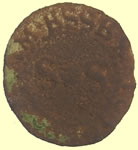 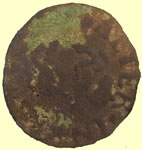 |
 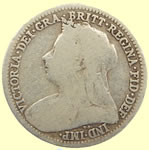 |
||||||
| 1656 Samuel Salter of Dedham Copper trade farthing | 1901 Victoria milled silver sixpence | ||||||
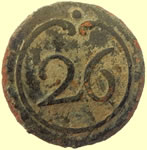 |
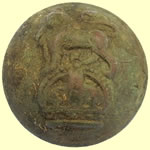 |
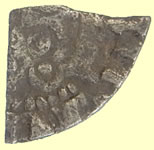  |
|||||
| French Infantry Button 26th Line Regiment Circa 1803-1814 |
WWII military button | 1247 Henry III hammered silver fathing London mint |
|||||
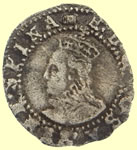 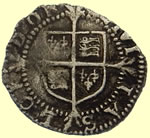 |
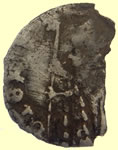 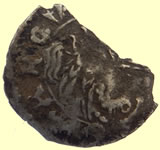 |
||||||
| 1592- 5 Elizabeth hammered silver penny - Tun mint mark | Venetian Soldino hammered silver Michele Steno (1400-1413) | ||||||
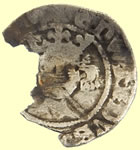  |
  |
||||||
1327 Edward III hammered silver penny - quadrefoil with pellet at centre of reverse cross Obv EDWARDVS **** Rev CIVI/TAS/EBO/RACI - York mint |
Medieval hammered silver long cross penny Quadrefoil with pellet at centre of reverse cross -York mint |
||||||
 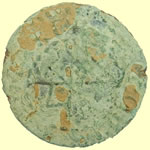 |
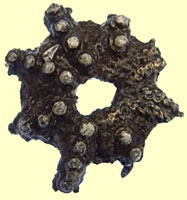 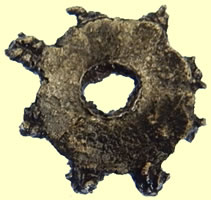 |
||||||
| 17thC James Robjent grocers of Maldon Essex hammered copper trade farhting | 16thTudor gilded silver mount - reported to musuem as potential treasure | ||||||
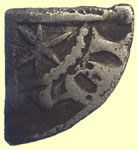 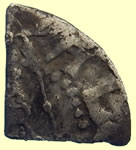 |
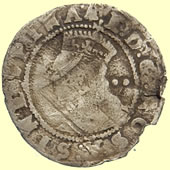 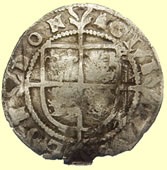 |
||||||
| Alexander II 1214-49 Scottish hammerd silver qtr penny | 1582 - 3Elizabeth hammered silver half groat - Bell mint mark | ||||||
 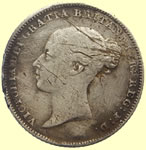 |
  |
||||||
| 1838 Victoria milled silver sixpence | Pre 1216 Taco'd short cross hammered silver penny | ||||||
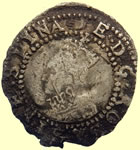  |
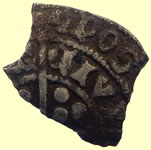 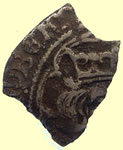 |
||||||
| 1590- 2 Elizabeth hammered silver penny - Hand mint mark | Medieval hammered silver groat fragment | ||||||
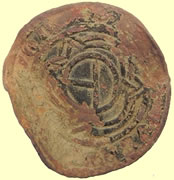 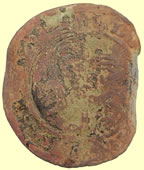 |
  |
||||||
| 1562 AD Hans Krauwinckel I Master German Lion of St Mark Jetton | Medieval hooked mount | ||||||
 |
 |
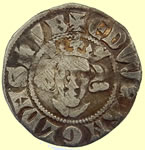 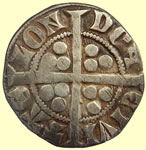 |
|||||
| WWI lead toy soldier | 18thC toy cannon | 1341 Edward III hammered silver penny - Florin Obv EDWAR ANGLE DNS hYB Rev CIVI/TAS/LON/DON - London mint |
|||||
  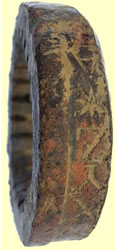 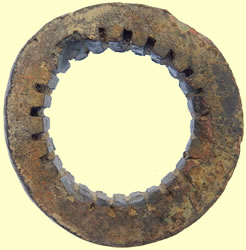  |
|||||||
| Outer ring of a 16th/17thC combination lock - needs more research | |||||||
 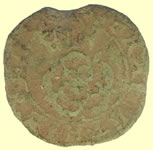 |
 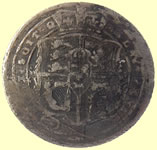 |
||||||
| 1634 Charles 1st hammered coppe rose farthing | 1817 George III milled silver sixpence | ||||||
 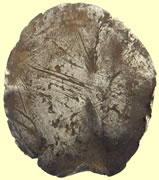 |
 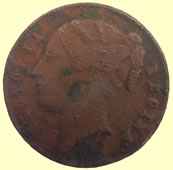 |
||||||
| 1604 James 1st Scottish Merk sometimes known as the half thistle dollar and value of 13 shillings and 4 pence | Victorian "Cumberland Jack" Token 1837
These are a common find in boxes of household junk, old drawers, and accumulations and collections of coins. They are made of brass, probably as a satyrical gaming token. When Queen Victoria acceded to the British throne, she could not assume the Hanoverian throne, as this was restricted to male succession only. Her relative the Duke of Cumberland therefore succeeded in her place. Apparently he was quite unpopular, and this jeton was issued as a humorous comment on his departure from the British Isles. Obverse Crude young head portrait of Queen Victoria, facing left, with her hair in her familiar "bun". This portrait is very similar to that which appears on the young head sovereigns of Victoria, with the legend (inscription). VICTORIA REGINA Reverse |
||||||
 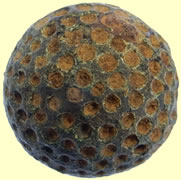 |
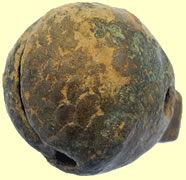 |
||||||
| Medieval beehive thimble | 16thC fish scale crotal bell | ||||||
 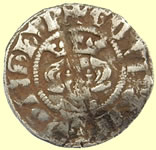 |
  |
||||||
1341 Edward III hammered silver penny - Cross 1 Obv EDWR ANGL DNS hYB Rev CIVI/TAS/CAN/TOR -Canterbury mint |
|
||||||
|
|||||||
Cleaning up Roman silver coin - sent for ID Col John What you have here is a silver Siliqua of Gratian, (367-383) the young son of Valentinian I, elevated to Augustus at the age of 7. This piece is from the mint at Trier, the exergual mint mark is TRPS• References are RIC IX, 27f-1; and RSC 86a. This type with Roma holding Victory and a scepter rather than the inverted spear Roma generally holds in her left hand on VRBS ROMA Siliquae dates to the period 367-375. However, considering Roman coins in general, Siliquae are far scarcer than, say, Denarii. I've heard it said that you'll see at least 100 Denarii for every Siliqua you'll ever see - and although I haven't strictly "kept score" or otherwise checked empirical statistics, I'd say that's probably about right. It's a very nice piece which I expect will be quite nice looking after some minor, light cleaning - I wouldn't try to take all of the darker tone off the fields as it will be slightly more valuable with the more "naturally toned" looking appearance that it's probably possible to achieve by gentle cleaning of this very light darkening. Mark |
|||||||
 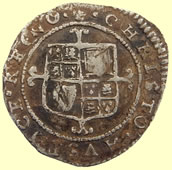 |
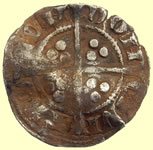 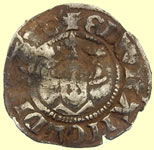 |
||||||
| Rare find 1660-85 Charles II hammered silver half groat | 1291-4 Edward 1st hammered silver penny - Class 6 Obv EDWR' ANGL DNS hYB' Rev CIVI/TAS/LON/DON - London mint |
||||||
 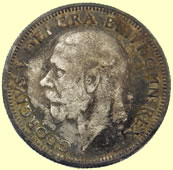 |
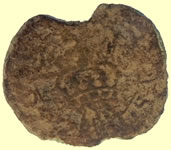  |
||||||
| 1929 George V milled silver shilling | 1634 Charles 1st hammered copper rose farthing | ||||||
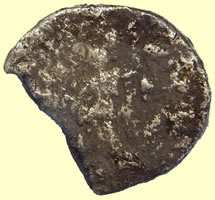 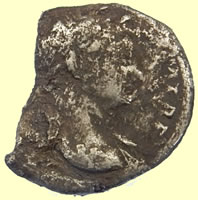 |
|||||||
Cooking 2ndC Roman silver coin sent for quick ID My first reaction was to say Trajan from the shape of the head, but then looking at the face more closely, I begin to wonder if it's not one of the Flavians - Vespasian or Titus particularly, or a younger portrait of Domitian. I believe that what we can see of the obverse legend from 2:00-4:00 reads ...[P] M TR P - so that is not particluarly specific to any one ruler. The Tribunician power was almost a guaranteed office of the emperor. I could check to see which emperors used legends which ended in ...P M TR P which will generally also have the rest of the laundry-list of Imperial titles continuing on the reverse. I can't quite make out what the figure is doing on the reverse and what, if any, attributes may be associated. It might be either the Roman numeral II or part of a III or IIII we can see from 3:00-4:00 on the reverse and that would be likely to be the consular number - it was more normal for an emperor to have been consul a few times - very seldom did they hold this office more than 4 or 5 times - so that doesn't do much to narrow-down the field. Let me check the legend lists and see if I can narrow down the possibilities any by seeing who among them used an obverse legend ending in P M TRP. Mark |
|||||||
 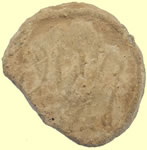 |
 |
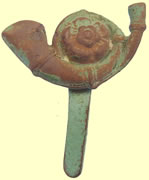 |
|||||
| 17thC lead token | 1500-1700 mount | Rifle regiment cap badge | |||||
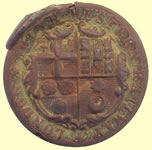 |
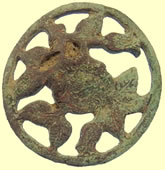 |
 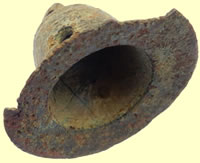 |
|||||
| London South Western Railway button | Victorian mount | Georgian horse harness bell | |||||
 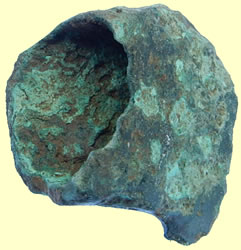 |
|||||||
| 850 Bronze Age socketed axe head | |||||||
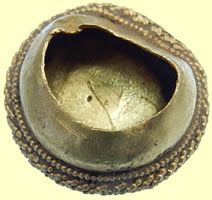 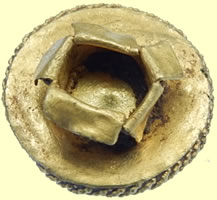 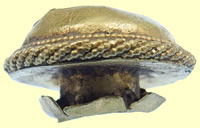 |
|||||||
| Decorated gold stud reported to museum as potential treasure | |||||||
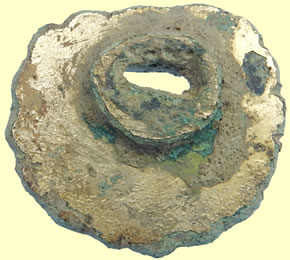 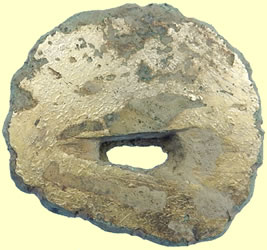 |
|||||||
| Huge C10thC gilded Saxon plate | |||||||
 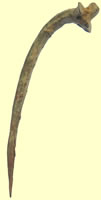 |
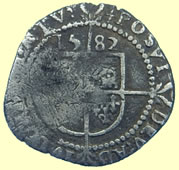  |
||||||
| Huge 2ndC Roman fibular brooch | 1582 Elizabeth 1st hammered silver half groat | ||||||
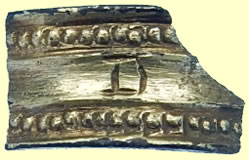 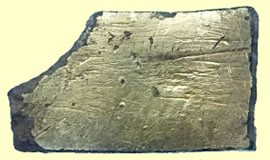 |
|||||||
| 16thC Tudor gilde silver ring fragment - reported to museum as treasure | |||||||
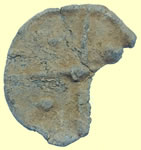 |
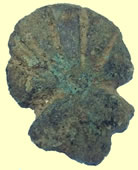 |
  |
|||||
| 15thC lead token - type 2 | Medieval mount | 1634 Charles 1st hammered coppe rose farthing | |||||
 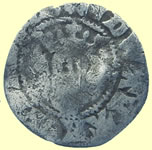 |
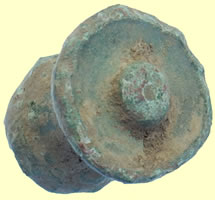 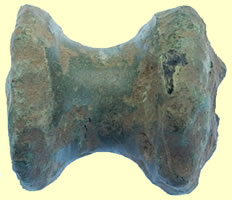 |
||||||
1279 Edward 1st hammered silver penny Obv EDWAR ANGL DNS hYB Rev CIVI/TAS/DVR/EME - Durham mint |
Roman mount | ||||||
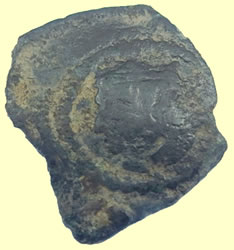 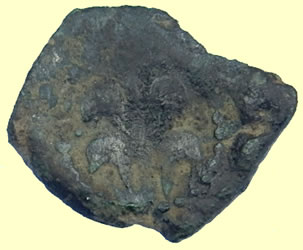 |
|||||||
Spanish diner of Ferdinand II (1479-1516) Obv Crowned King bust facing left Rev Feathers or plumes ID'd by Ohio Drew |
|||||||
 |
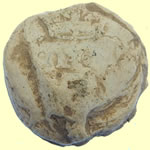 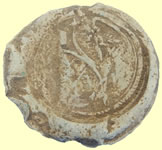 |
||||||
| 3 - 1634 Charles 1st hammered copper rose farthings | Post medeival lead bale seal | ||||||
 |
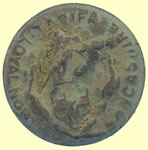 |
 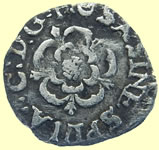 |
|||||
| 1500-1700 mount | Loyal North Lancashire button | First rose each side with legend and no inner circles I have seen dug 1625 Charles 1st hammered silver penny |
|||||
  |
 |
||
1279 Edward 1st hammered silver penny Obv EDWAR ANGL DNS hYB Rev CIVI/TAS/DVR/EME - Durham mint |
Cast copper alloy buckle frame 1500 -1700 |
||
Medieval badges Ref Mitchiner p244 939 - 941
|
|||
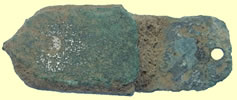  |
 |
||
| Medeival gilded strap end | 2 - 1634 Charles 1st hammered copper rose farthings | ||
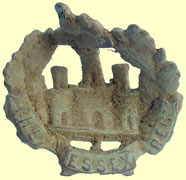 |
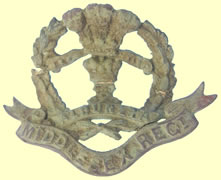 |
||
| WWI Essex Regiment cap badge | WWI Middlesex Regiment cap badge | ||
 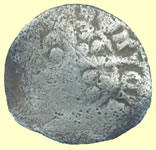 |
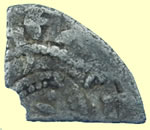 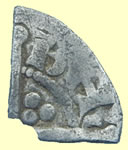 |
||
1279 Edward 1st hammered silver farthing Obv EDWARDVS ***** Rev DON - London mint |
1247 Henry III hammered silver voided long cross farthing Obv /BER - Moneyer Gilbert of Canterbury mint |
||
 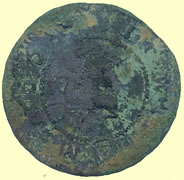 |
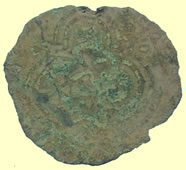 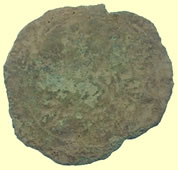 |
||
1668 'His halfpenny' hammered copper trade token Richard Swinborne of Witham Essex |
1586 Hans Krauwincel II Rose orb Jetton | ||
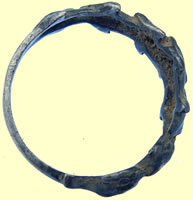  |
|||
| Victorian silver dolphin ring | |||
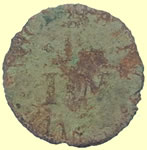 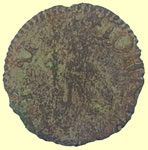 |
  |
||
17thC John Parker , Falcon(Falken) of Wivenhoe Essex hammered copper trade farthing P IM - Ref Norweb 1433 |
Medieval mount | ||
 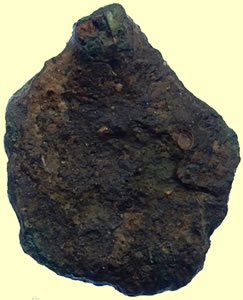 |
|||
| Stunning 2ndC Roman enamelled plate brooch | |||
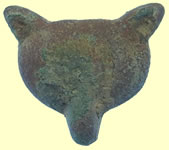 |
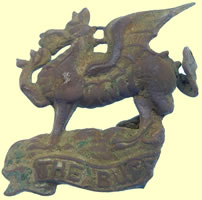 |
  |
|
| Scouts badge | The Buffs (Royal East Kent Regiment) badge | ||
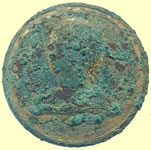 |
 |
 |
 |
1876-1894 Honour; if the head of a "blackamoor" or Moor, refers to deeds of prowess in the Crusades Livery button Firmin & Sons Ld |
18thC silver Royal Navy button | 17thC button | 19thC Royal Thames Yacht Club |
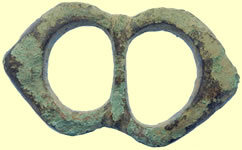 |
|
||
Post medieval cast copper alloy buckle frame Circa AD 1600 - 1699 |
Georgian silver spur fitting - maker RH | ||
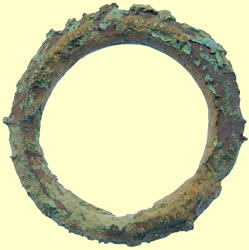 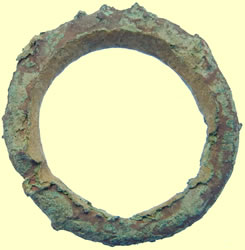 |
|||
| C10thC Saxon gilded harness ring - gold dot decoration ramins on faces | |||
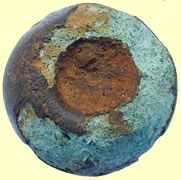 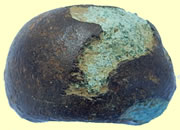 |
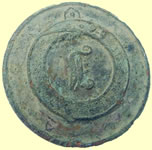 |
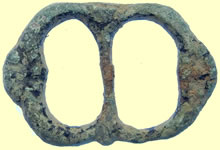 |
|
| Iron Age bronze bead | 19thC livery button | Post medieval cast copper alloy buckle frame Circa AD 1600 - 1699 |
|
 |
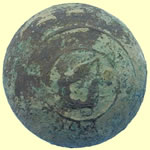 |
 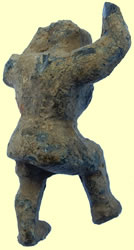 |
|
| RN Capt / Commander - 1812 |
19thC livery button | Interesting large lead figurine - needs research | |
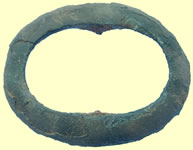 |
 |
  |
|
Cast copper alloy double-looped sub-annular shoe or knee buckle with bevelled internal edge Circa 1650-1720 |
16thC Tudor clothing fastener | 1817 George III milled silver sixpence | |
  |
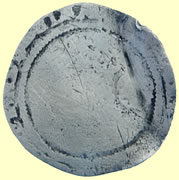 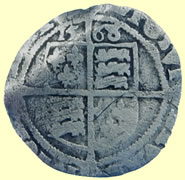 |
||
1154 Henry II hammered silver short cross half penny - Class 1b Obv VER+DA - Moneyer Davi of London mint |
1568 Elizabeth 1st hammered silver sixpence | ||
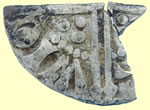 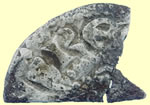 |
 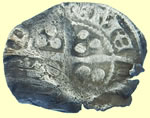 |
||
1247 Henry III hammered silver voided long cross cut halfpenny Rev /WIC/ |
1279 Edward 1st hammered silver penny Obv EDW** ANG**** Rev CIVI/TAS/DVR/EME - Durham mint |
||
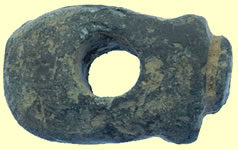 |
 |
||
| Medieval chaffing dish handle mount | Georgian furniture mount | ||
 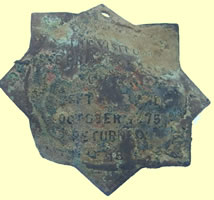 |
|||
| Prince Albert Karl Anton Ludwig Wilhelm Viktor of Saxony (25 February 1875 in Dresden – 16 September 1900 in Schönwölkau) was a Saxon prince from the House of Wettin. He was the youngest son of King George and his consort, Maria Anna of Portugal. | |||
 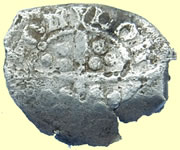 |
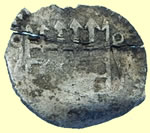 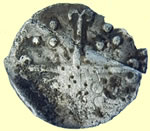 |
||
Medieval hammered silver farthing Rev CIVI/TAS/LON/DON - London mint |
1601 Elizabeth 1st hammered silver half penny | ||
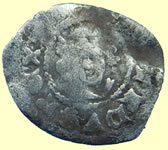 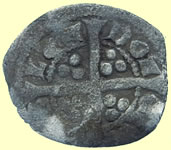 |
 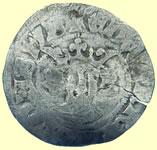 |
||
1285/6 Edward 1st hammered silver farthing - new issue inner circle both sides - Type 28 Rev EDWARDVS REX A Rev CIVI/TAS/LON/DON - London mint |
1344 Edward III hammered silver penny - Florin issue Obv + EDWAR R ANGL DNS hYB Rev VILL/SCIE/DMV/NDI - Bury St Edmunds mint |
||
  |
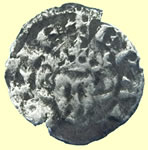 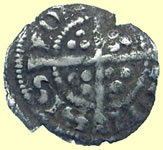 |
||
| 1873 Victoria milled silver sixpence | 1280 Edward 1st hammered silver farthing - Sterling issue - no inner circle on obverse - Type 10 Obv + ERAN GLIE Rev LONDONIENSIS/ |
||
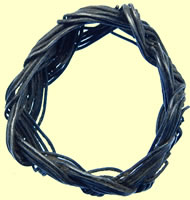 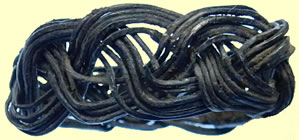 |
|||
Twisted silver wire ring - sent to museum a spotential treasure as these are hard to date Dated by museum as 19thC so not treasure |
|||
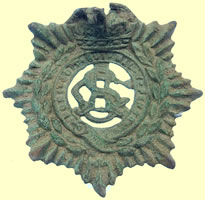 |
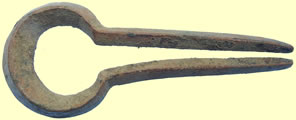 |
||
| WWII Army Service Corp badge | Georgian Jews harp | ||
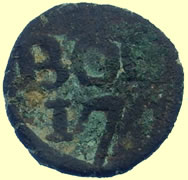 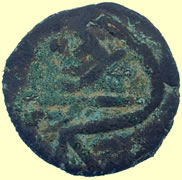 |
|||
No clue on this copper coin - researching it 2 Pice (Double Pice). Year: 1773. Weight: 10.11g [10.28g]. Metal: Copper. Diameter: 21.00 mm. Edge: Plain. Alignment: Rotated. Mint: Bombay. Obverse: Large crown divides G-R at top, "BOMB" written below with date 1773. Reverse: United East India Company Bale mark. Mintage: N/A. Mintage Years: One year type. Note: The letters in the balemark may be arranged in the usual way, or the E and the I may be transposed. |
|||
 |
 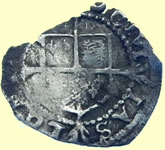 |
||
| 2 - 1634 Charles 1st hammered copper rose farthings | 16th Elizabeth 1st hammered silver penny | ||
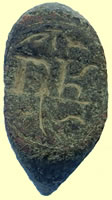  |
|||
| Medieval seal ring - NK | |||
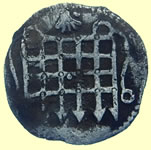 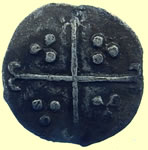 |
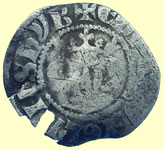 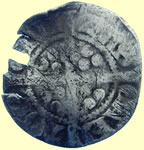 |
||
| 1584- 6 Elizabeth 1st hammered silver half penny | 1327 Edward III hammered silver penny Obv + EDW**** NGL DNS hYB Rev CIVI/TAS/CAN/TOR- Canterbury mint |
||
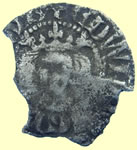 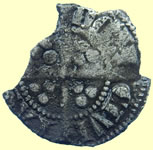 |
 |
||
1279 Edward 1st hammered silver penny Obv + EDWA*** GL ***hYB Rev CIVI/TAS/LON/DON- London mint |
Medieval mount | ||
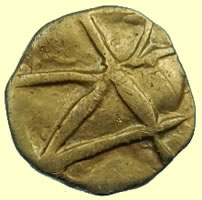 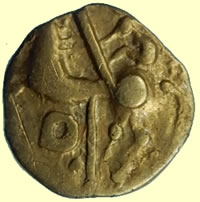 |
|||
Mint condition - 50 BC Celtic gold Gallic import qtr stater - sent to PAS for recording Crossed lines with rider ABC 37, VA 37 Classed as scare 1.94g, 12 mm Caletes tribe, Normandy coast |
|||
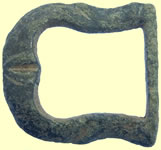 |
 |
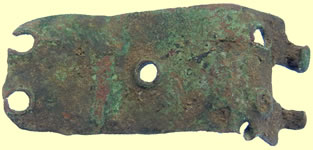 |
|
Post medieval cast copper alloy asymmetrical buckle frame, some with with a pointed knop at the end of the loop The buckle dates from c.1575 - 1700 |
Georgian casket key | Medieval buckle plate | |
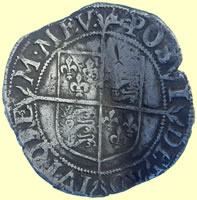  |
  |
||
| 1569-71 Elizabeth 1st hammered silver shilling (12 pence)- Castle mint mark | 1603 James 1st hammered silver sixpence | ||
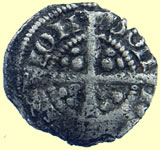  |
 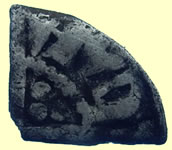 |
||
1280 Edward 1st hammered silver farthing - Sterling issue - no inner circle on obverse - Type 10 Obv + ERAN GLIE Rev LONDONIENSIS/ |
1247 Henry III hammered silver voided long cross farthing London mint |
||
 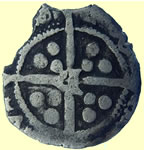 |
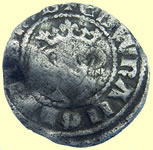  |
||
1485- 1509 Henry VII hammered silver penny - D at centre of reverse cross Bishop John Sherwood Durham mint
|
1279 Edward 1st hammered silver penny Obv + EDWAR ANGL DNS hYB Rev CIVI/TAS/LON/DON- London mint |
||
 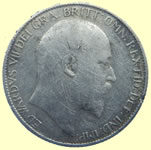 |
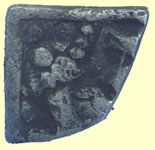 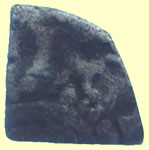 |
||
| 1910 Edward VII hammered silver sixpence | 1247 Henry III hammered silver voided long cross farthing London mint |
||
 |
 |
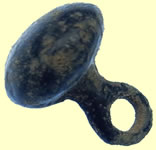 |
|
| 3 - 1634 Charles 1st hammered copper rose farthings | 17thC buckle | 16thC Tudor button | |
 |
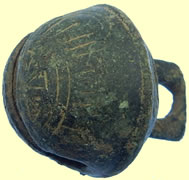 |
  |
|
| Medieval annular brooch | 17thC crotal bell | 1247 Henry III hammered silver voided long cross half penny London mint Obv RIC/ARD - Moneyer Ricard |
|
  |
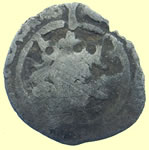 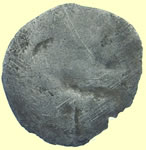 |
||
1279 Edward 1st hammered silver penny Obv **S REX Rev /TOR - Canterbury mint |
1461- 1470 Edward IV hammered silver penny - Type X - Cross Fitchee Long | ||
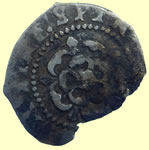 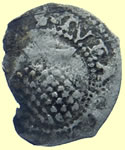 |
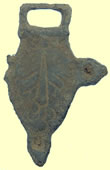 |
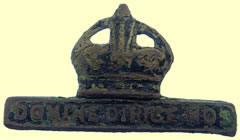 |
|
| 10604 James 1st hammered silver penny | 17thC clothing fastener | Military badge Domine dirige nos Lord, direct us —motto of the City of London |
|
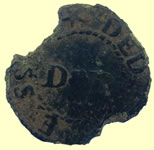 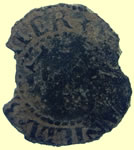 |
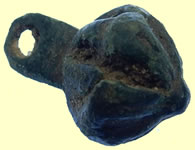 |
||
Incorrect mulled Dedham trade farthing 17thC Nathaniel Backler of Dedham Essex hammered copper trade farthing Obv NB Rev DT |
16thC Tudor button | ||
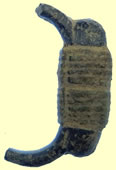 |
 |
 |
|
| Medieval buckle fragment | Medieval buckle fragment | Celtic woad grinder pestal | |
 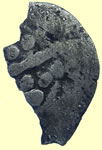 |
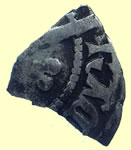 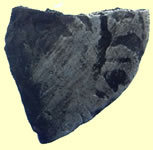 |
||
| Medieval hammered silver long cross penny fragment | 1377 Richard II hammered silver penny fragment Obv ** ICAR Rev /RAC - York mint |
||
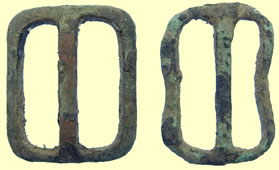 |
  |
||
| 19thC buckles | 1922 George V milled silver sixpence | ||
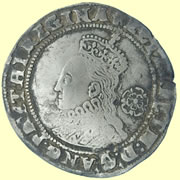 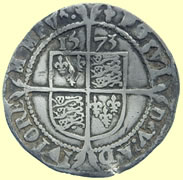 |
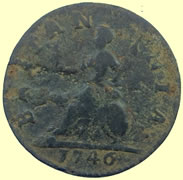 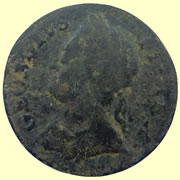 |
||
| 1573 Elizabeth 1st hammered silver sixpence - Acorn mint mark | Stunning condition 1746 George II milled copper half penny | ||
 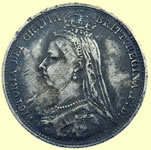 |
 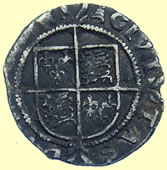 |
||
| 1892 Victoria milled silver sixpence | 1582-3 Elizabeth 1st hammered silver half groat - Bell mint mark | ||
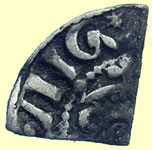 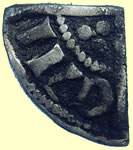 |
|||
1247 Henry III hammered silver voided long cross farthing Canterbury mint |
Medieval buckle tongue | ||
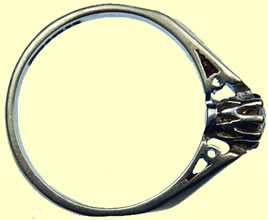  |
|||
Sweet 1989 - 9 carat gold diamond ring - Sheffield hall mark Maker A.T. L d 1.70g, 20mm dia |
|||
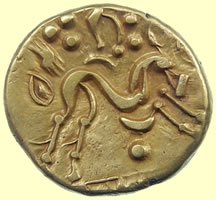 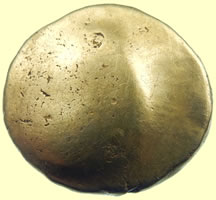 |
|||
Beautiful strike of a 56 BC Gallo Belgic full Celtic gold stater - sent to PAS for recording 6.26g, 20 mm |
|||
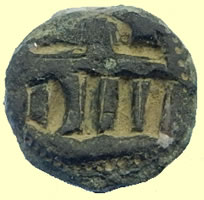 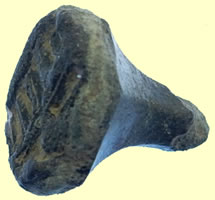 |
|||
| Medieval seal matrix | |||
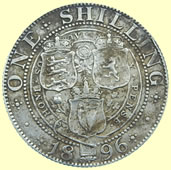 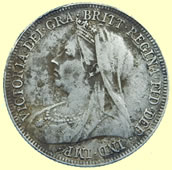 |
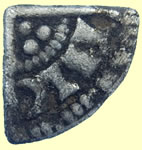  |
||
| 1896 Victoria milled silver shilling (12 pence) | 1247 Henry III hammered silver voided long cross farthing Obv /NIC/ - Moneyer Nicole |
||
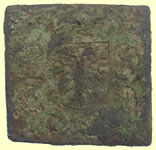 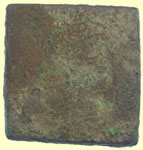 |
  |
||
| 16thC German states coin I have not seen before and no in my ref books- double headed eagle on Obv ? | 1582-4 Elizabeth 1st hammered silver half groat - A mark | ||
 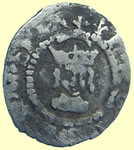 |
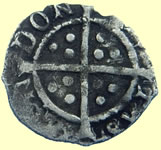 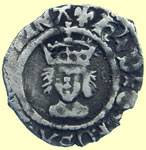 |
||
1526-44 Henry VIII hammered silver half penny - narrow hair - I.m. Lis Obv hx *****SIE x SPIA Rev is mule from farthing DEO - London mint 0.35g,12mm |
1526-44 Henry VIII hammered silver half penny - narrow hair - I.m. Lis - Type 1L Obv hx DxGx ROSA xSIE x SPIA Rev CIVI/TAS/xLON/DON - London mint 0.33g, 11mm |
||
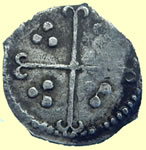 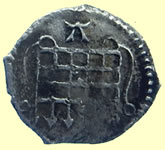 |
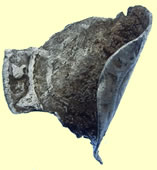 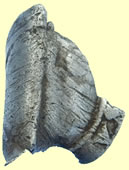 |
||
| 1582-4 Elizabeth 1st hammered silver half penny - A mark | 16thC Elizabeth 1st hammered silver sixpence | ||
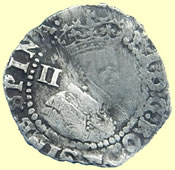  |
  |
||
| 1623- 4 James 1st hammered silver half groat - Lis mint mark | 1422- 61 Henry VI hammered silver half penny - trefoils by neck and leaf on breast- Trefoil -Leaf issue Obv **** REX ANGL Rev CIVI/TAS/xLON/DON - London mint |
||
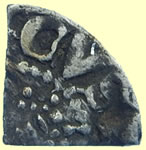  |
  |
||
1247 Henry III hammered silver voided long cross farthing |
Medieval hammered silver long cross penny - Quatrefoil with pellet at centre on rev cross - York mint | ||
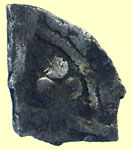 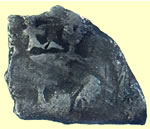 |
 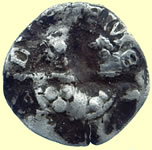 |
||
| Medieval hammered silver long cross qtr penny | 1327-43 Edward III hammered silver penny - Class 15d Obv + EDWAR ANGL DNS hYB Rev CIVI/TAS/DVNELMI- Durham mint |
||
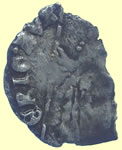  |
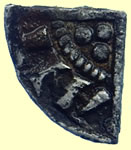 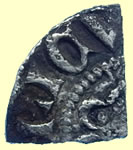 |
||
| Venetian Soldino hammered silver Michele Steno (1400-1413) | 1247 Henry III hammered silver voided long cross farthing | ||
 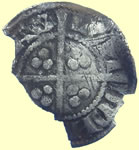 |
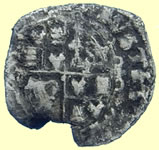  |
||
1279 Edward 1st hammered silver penny Obv + EDWR ANG**** B Rev CIVI/TAS/LON/DON- London mint |
1625 Charles 1st hammered silver penny | ||
 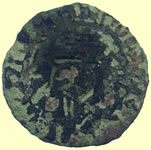 |
  |
||
| 1666 John Rolfe of Harwich Essex hammered copper trade farthing | 1649 Commonwealth hammered silver penny | ||
 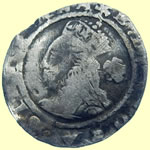 |
 |
 |
|
| 1575 Elizabeth 1st hammered silver penny | 19thC Kings light dragoon guards button | Victorian silver cane band | |
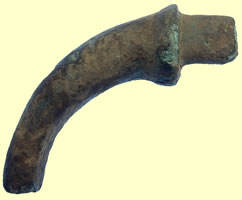  |
 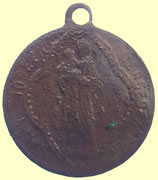 |
||
| 2ndC Roman terret ring | Victorian religious medallion | ||
  |
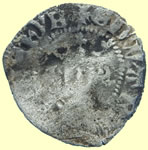 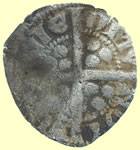 |
||
| 1247 Henry III hammered silver voided long half penny - too fragile to clean | 1279 Edward 1st hammered silver penny Obv + EDWAR A*** S hYB Rev VILL/SCIE/DMV/NDI Bury St Edmunds mint |
||
  |
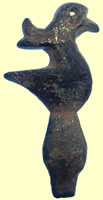 |
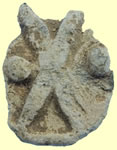 |
|
| Post medieval copper ring | Gilded post medieval mount | Medieval lead gaming token | |
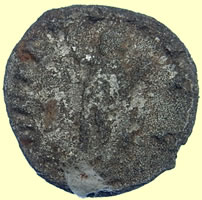 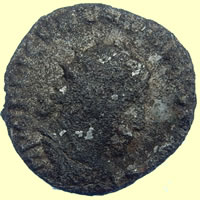 |
|||
Silver washed Roman coin sent for ID It appears that your diggers have come upon a site with a significant percentage of coins of the "Contemporary Copy" category. Although this coin is probably official - and unfortunately I can't read the legends - I suspect it's someone from the mid-late 3rd Century - you can see that the quality of the metal is such that it's difficult to tell whether or not it was silvered. Since the basic metal appears to be billon, and the coin would have been silvery-looking when struck, I'm going to guess- with some helop from the profile - that this is Trebonianus Gallus, 251-253. It seems as though the obverse legend is quite crowded and that also tends to point to Treb. Gallus. Here's a typical antoninianus of Treb Gallus for comparison purposes: Even though I am conditionally saying your coin is likely to be Treb. Gallus, I suppose it could be any of the bearded emperors beginning from about Philip (244-249) through the joint reign of Valerian & Gallienus, 253-260. It is only during the sole reign of Gallienus, 260-268, that the antoninianus became so debased that silvering was resorted to on an official basis. This is an antoninianus of Valerian in pretty good silver - although he wasn't bearded, his son Gallienus was:
and Gallienus from early in the sole reign, just after the Joint reign:
As you can see, these are still fine enough silver to retain a generally silvery appearance - although they're probably not over 25%-30% silver. Only after Valerian's capture, during Gallienus' sole reign, did the metal get so bad that the coins needed to be surface-enriched. Although people say "silver washed" it is highly unlikely that any plating process was employed - instead, through acid "pickling" of the flans prior to striking (already a necessary step to remove fire-scale from the casting process) the percentage of silver at the surface was greater than in the core. Silver existed in tiny "beads" on the surface of the flans prior to striking, then spread out under the pressure of the dies, giveing the coins a plated appearance. This is a typical "silvered" coin of Gallienus sole reign, 260-268
Gallienus' legends typically were far shorter than the legend on the obverse of your coin, so we can pretty well rule him out. This is another reason I'm still saying Treb Gallus. I've been making this photo-essay because the history of the chaotic mid 3rd century is scanty and clouded with inaccuracies in the existing records. This complicates the coinage picture, because as the offices of the Imperial administration began to fail - including in the supply of coin - many areas turned to producing their own copies of official coin. These were semi-official contemporary copies, not "counterfeits", because they were not intended to deceive. They were coinages of necessity. So you see all sorts of more or less official-looking coin from this period which is not, in fact, official. If a piece is earlier than Gallienus' sole reign and appears silvered, it means it's not an official issue, although it may not be a "counterfeit" per-se, in the sense that an earlier fourée or "subaeratus" was a counterfeit. And the coinage of the next city along the border might be similar but produced by a different process yielding a different result. The several coins you send images of today are all from that general era, but only this 1st one - the probable Treb Gallus - is, in my opinion, likely to be an official Imperial product. I will continue in the next email to try to explain and put the coins you send today into some sort of context. Mark |
|||
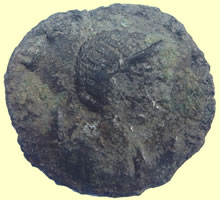 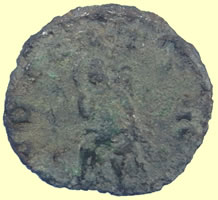 |
|||
Roman bronze sent for ID At first I thought this second piece was almost certainly what is generally referred-to, in error, as a "Limes Denarius". The term Limes was borrowed from a class of early 1st century Æ copies from northern Gaul and Britain - the "Limes Falsa" pieces. These are mostly underweight and fairly crude copies of the Æ coins of the Julio Claudians. These were struck in areas just outside the official administration - therefore "limes" or the borders. The pieces like the "Limes denarius" (the term, although sort of an oxymoron, has caught-on in the market so there is little use in trying to correct people about it) pictured below were typically cast in Æ, and are typically a product of the Balkans or more Easterly areas - some from the German frontier just over the Rhine, too. They generally date to the Severan Dynasty era - possibly a little earlier and later in some cases, but the Severans are the typical subjects of these cast pieces. Some of them were silvered, some were not - and this varied from place to place. Where they were castings like this copy of a denarius of Julia Domna, below, the molds were usually made by pressing offical coins into clay to create the molds. This also resulted in these pieces being a little smaller than the prototypes due to the shrinkage of the clay. Here is a "Limes" piece of Domna: The more I look at it, the more I believe your piece is not a Limes piece, but an official piece of Salonina, Gallienus' wife, from the sole reign period of debased coinage - like this piece below. You can see that the bust on both this example and on your coin has a crescent behind the shoulders. For a female, this sign of the moon was the equivalent of the spiky radiate crown of Sol on a male portrait, proclaiming that the piece was a double-denomination - like a Dupondius (2 Asses) or this, an Antoninianus (2 derarii)
I think the reverse type on your piece is PVDICITIA AVG - the allegorical personification of the supposed monogamous virtues of the Imperial women - right! Mark
|
|||
Silver washed Roman coin sent for ID This piece is almost certainly a "Limes" piece, although of better than usual fabric. The tip-off is that the obverse doesn't match the reverse - these types were never used together officially. This is fairly common among the cast "Limes" material as two different coins might have been used to impress the obverse and reverse molds. The odd thing is that the metal seems adequately good that it should not ahe needed to be silvered. Unless the color is way off in your photo, the worn area on the hair curls, should be more coppery-colored, but is quite silvery. If this was a very base coin with surface enrichment or silver wash of some sort, the silver should have worn off first exposing the base metal beneath. At any rate, this is Septimius Severus, the founder of the Severan dynasty, 193-211. Often his legends contain some reference to his posthumous declaration of self-adoption by Marcus Aurelius, but the obverse legend here is SEVERVS PIVS AVG - very simple, and dates to the later part of his rule when he was no longer selling the self-proclaimed, reverse-adoption thing quite as hard as he had when he had first assumed the purple and was touchier about his non-aristocratic heritage. These two types were never used together on official issues, so this is some sort of contemporary copy and would fall into the general category of "Limes denarius". It's a little unusual to see these so far west, but soldiers travelled all over the Empire so it's always possible. It's odd too that it appears to be of better metal than one would expect for a Limes copy. This is an example of a more usual-looking Limes piece for Sept. Severus:
Mark |
|||
  |
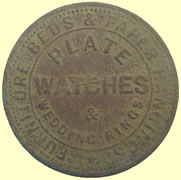  |
||
| Medieval shield mount | 19thC Colchester Bedwell token | ||
|
|||
Medieval cross bow bolt 770 mm L |
|||
|
|||
| 1stC Celtic cosmetic woad grinder with suspension loop | |||
  |
|
||
| 1634 Charles 1st hammered copper rose farthing | 1216 Henry III hammered silver short cross half penny Rev VLF ON L - Moneyer Randvlf of London mint |
||
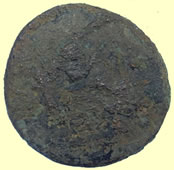 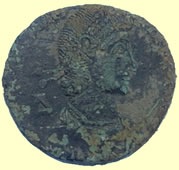 |
|||
4thC Roman bronze sent for ID Although I can't exactly be certain about the reverse, it's almost certain that this is Constantius II, 337-361, the youngest son of Constantine I. At the time these pieces were being struck with sequence letters in the obverse field behind the bust, Constantius II is the only person who would have been portrayed wearing a diadem. All the other folks for whom coins of this sort were struck during this period were portrayed bare-headed. I'm also going to guess that this is most likely a Fallen Horseman FEL TEMP REPARATIO Majorina. You don't say how large it is, but those with the sequence letters on the obverse tended to be the larger-sized pieces (which also tended to shrink as time went on) as opposed to those which originally had been intended as Half-Majorinae, but were the size that all the circulating coin would up being by the end of the FEL TEMP era (350-355).\ I don't have a photogenic example of Constantius II in this type & era to show you, but this is his cousin, Constantius Gallus - you can see he's bare-headed and has a bit of an embarrassing mullet-cut - but it has the sequence letter in the obverse field, etc.
Mark |
|||
  |
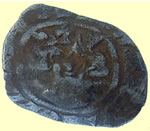 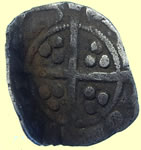 |
||
| 16thC Elizabeth 1st hammered silver half penny | 1279 Edward 1st hammered silver penny Obv + EDWAR ANGL DNS hYB Rev CIVI/TAS/LON/DON- London mint |
||
 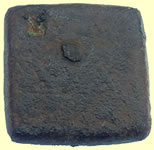 |
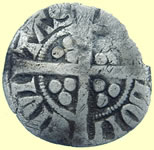 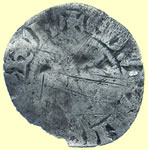 |
||
Monster gold coin weight- 1614 James 1st Rose Ryal coin weight - 30 shillings (360 pence) Obv Crown XXXs Rev Shield |
1279 Edward 1st hammered silver penny Obv + EDWAR ANG*** S hYB Rev CIVI/TAS/LON/DON- London mint |
||
  |
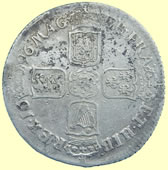 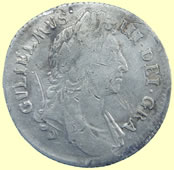 |
||
1485 Henry VII hammered silver groat - Two arches to crown, only outer jeweled - Bust 3 (pupils to eyes, realistic hair) Mint mark Rose - trefoil stops - trefoil stops to reverse legend Obv + hENRIC DI*GRA* ****** Rev *CIVI/TAS*/*LON/DON- London mint 22.5mm, 2.58g |
1696 William III milled silver shilling | ||
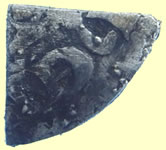 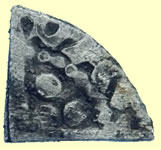 |
 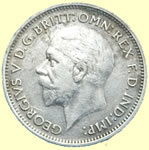 |
||
| 1247 Henry III hammered silver voided long cross farthing | 1935 George V milled silver sixpence | ||
  |
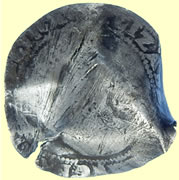 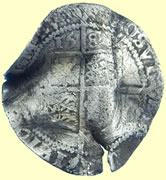 |
||
| 1928 George V milled silver half crown (30 pence) | 1582 Elizabeth 1st hammered silver sixpence | ||
 |
 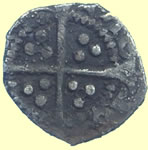 |
||
| 18thC Royal artillery button | 1509 - 26 Henry VIII hammered silver half penny - Cross fourchee - I.m. Voided cross Obv hENRIC ** York mint |
||
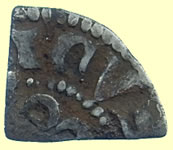  |
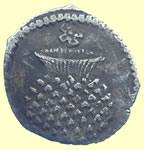 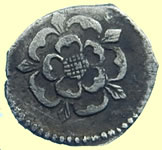 |
||
| 1247 Henry III hammered silver voided long cross farthing | 1613-15 James 1st hammered silver half penny - Cinquefoil mint mark | ||
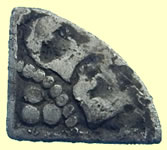 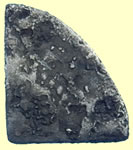 |
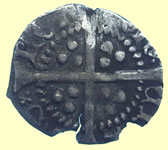 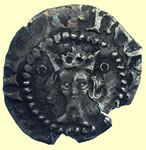 |
||
| 1247 Henry III hammered silver voided long cross farthing | 1399- 1413 Henry V hammered silver half penny - Type 5 (iii) broken annulets by crown - satire stops on reverse legend Obv hEN Rev CIVI/TASx/LON/DONx- London mint |
||
 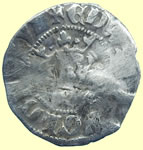 |
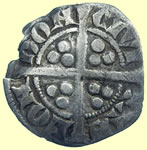 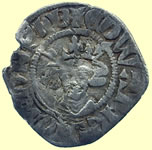 |
||
1361 Edward III hammered silver penny - Transitional Treaty Period Obv + EDW** ANGL DNS hYB Rev CIVI/TAS/DOR/ELME- Durham mint |
1300-1310 Edward 1st hammered silver penny - Class 10ab Obv + EDWAR R ANGL DNS hYB Rev CIVI/TAS/LON/DON- London mint |
||
  |
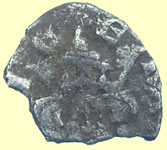 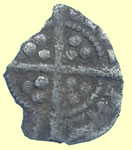 |
||
Medieval hammered silver long cross penny fragment London mint |
1280 Edward 1st hammered silver farthing - Sterling issue - no inner circle on obverse - Type 10 Obv + ERAN GLIE Rev LONDONIENSIS/ |
||
 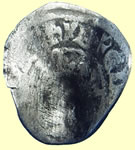 |
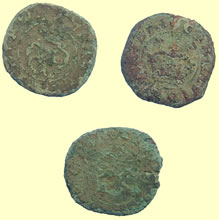 |
||
1300-1310 Edward 1st hammered silver penny - 10ab Obv + EDW**** hYB Rev VILL/SCIE/DMV/NDI- Bury St Edmunds mint mint
|
3 - 1634 Charles 1st hammered copper rose farthings | ||
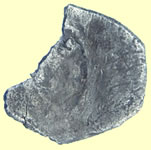  |
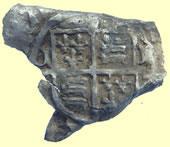  |
||
1285/6 Edward 1st hammered silver farthing - new issue inner circle both sides - Type 28 Oval flan Rev EDWARDVS REX Rev CIVI/TAS/LON/DON - London mint |
1531-44 Henry VIII hammered silver half groat - profile issue Archb Lee - EL by shield |
||
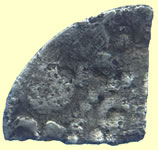 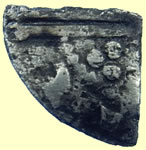 |
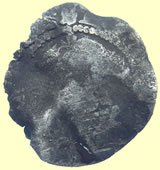 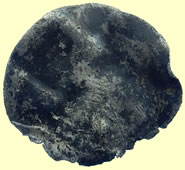 |
||
| 1247 Henry III hammered silver voided long cross farthing | 1603 James 1st hammered silver half groat | ||
  |
 |
||
17thC George Nicholson, grocers of Thorpe Le Soken Essex hammered copper trade farthing Ref Norweb 1401 |
Medieval pin | ||
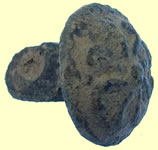 |
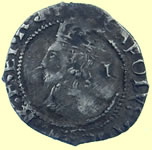  |
||
| 16thC Tudor button | 1635- 6 Charles 1st hammered silver penny | ||
Bronze Age (c.1500-1400BC) cast copper alloy primary shield pattern palstave, dating to the Acton Park Phase 137.5 mm L x 53.5mm W
A palstave is a development of the flat axe, where the shaped sides are cast rather than hammered |
|||
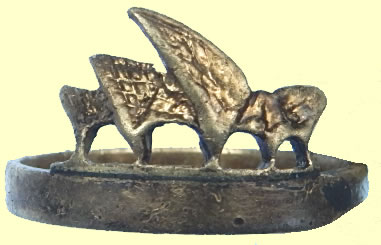  |
|||
Interesting looking 9 carat art deco style gold ring 2.21g, 19.5mm |
|||
c10thC Saxon stirrup mount type 12 - non open fretwork type , 43.56mm H Ref 302 Williams |
|||
 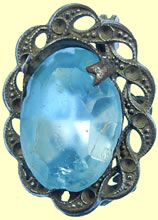 |
  |
||
| Victorian silver brooch with blue stone | 16thC Elizabeth 1st hammered silver half groat | ||
|
|||
| 13th/14thC medieval barrel lock | |||
  |
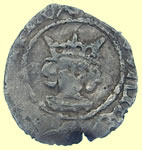 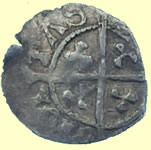 |
||
1279 Edward 1st hammered silver penny Obv + EDWA**** Rev CIVI/TAS/LON/DON- London mint |
1327 Edward III hammered silver half penny Obv EDWAR*** REX Rev CIVI/TAS/*** |
||
 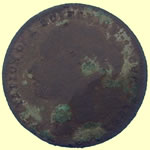 |
 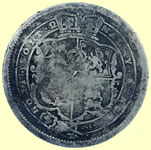 |
||
| 1844 Victorian model farthing | 1816 George III milled silver sixpence | ||
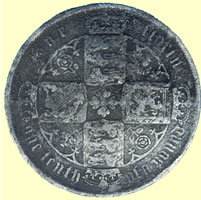 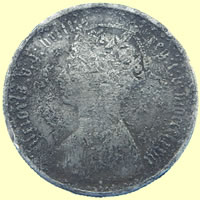 |
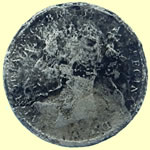  |
||
Victorian milled silver florin (24 pence) 1859 Gothic numeral mdccclix |
1881 Victoria milled silver 3 pence | ||
 |
 |
 |
 |
| Georgian spur buckle | 1500- 1700 mount | Georgian gilded watch winder | 1901 - 10 Edward VII badge |
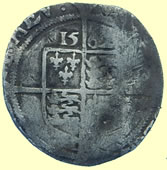 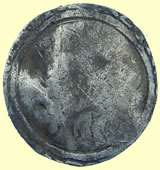 |
  |
||
| 1562 Elizabeth 1st hammered silver sixpence | 1766 Irish George III milled copper penny | ||
 |
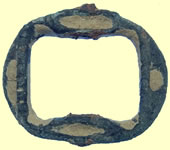 |
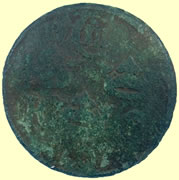 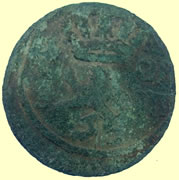 |
|
| Society button | Georgian shoe buckle | 1607 Dutch milled copper coin | |
 |
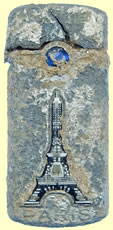 |
 |
|
| 19thC livery button | Paris souvenir lighter with blue stone | Georgian silver name tag - HR | |
 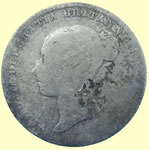 |
 |
 |
|
| 1945 Victoria milled silver sixpence | 1704 Anne coin weight - Crown A cipher London | 16thC Tudor button | |
 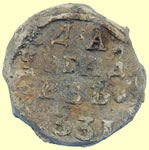 |
 |
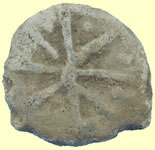 |
|
| 1777 Russian lead bale seal | 17thC lead token | 15thC lead token - Type 2 | |
  |
 |
||
1199 - 1216 John hammered silver short cross half penny - Class 5 Rev MILES.ON - Moneyer Miles of Oxford or Winchester |
Spitfire toy plane | ||
 |
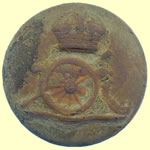 |
|
|
| Georgian claw and ball pot foot | WWII Royal Artillery button | 1910 luggage tag ? | |
 |
 |
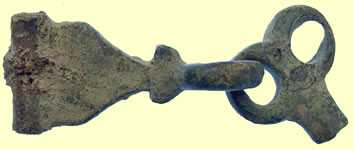 |
|
| 16thC Tudor clothing fastener | 16thC Tudor button | Georgian spur fitting | |
 |
 |
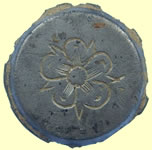 |
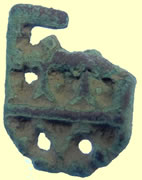 |
| Medieval buckle fragment | 15thC lead token - Type 2 | 18thC Royal Navy button | 16thC Tudor clothing fastener |
13thC Medieval heraldic belt mount of De Clare
|
|||
| 'Found more on De Clare-- seems there was a Gilbert "The Red" (red haired) de Clare & son of Richard-- was one of the Earls of Gloucstershire (7th , I think) and had a whole bunch of other lands in 20 counties in Eng and Ireland. Joined the Montfort rebellion against the king. Married a jaon (Johanna) daughter of Edward II Longshanks , she was born in Acre - the site in the holy land where the Crusaders / Templar's lost it all . He was born in 1243'. | |||
 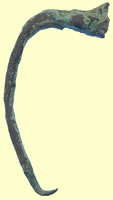 |
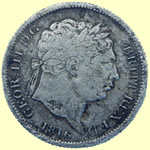 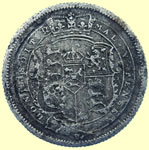 |
||
| 2ndC Roman fibular brooch | 1816 George III milled silver sixpence | ||
|
 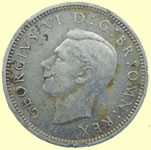 |
||
| Medieval knife pommel | 1944 George VI milled silver sixpence | ||
 |
 |
  |
|
| Pewter dollar play money | 18thC Royal Artillery button | 1247 Henry III hammered silver voided long cross half penny Rev NDE/hEN - Moneyer Henri of London mint |
|
 |
  |
||
| East Surry Regiment lapel badge | 1247 Henry III hammered silver voided long cross half penny Rev OLE/ON - Moneyer Nicole |
||
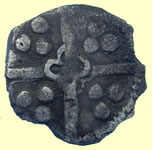  |
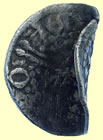 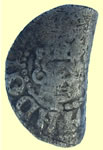 |
||
1427 1430 Henry VI hammered silver penny - Rosette Mascle issue Star by crown, quadrefoil in cemtre of reverse cross Durham mint |
Double struck obverse - 1247 Henry III hammered silver voided long cross penny | ||
 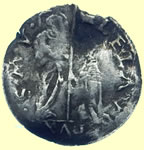 |
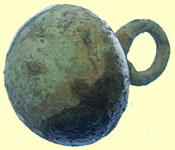 |
 |
|
1501-1521). Rev: LAVS TIBI SOLI (Thee Alone be Praised). Haloed figure of Christ holding a cross. Obv: LE LAV DVX S M V (Leonardo Lauredan, Doge. St Mark of Venice.) Doge kneeling before Saint Mark. |
16thC Tudor button | 15th lead token | |
  |
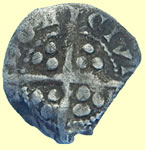 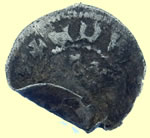 |
||
1307 -1327 Edward II hammered silver penny - Class 11a - Broken peal ornament to left, rounded backs on C and E Obv + EDWAR ANGL DNS hYB Rev VILSCIE/DMV/NDI - Bury St Edmunds mint |
1327 Edward III hammered silver half penny Obv EDW**** Rev CIVI/TAS/LON/DON - London mint |
||
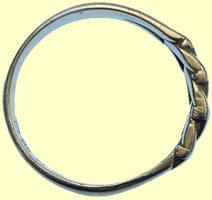 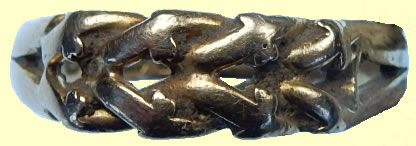 |
|||
1953 - 18 carat - London hall mark gold ring - date letter S 23mm, 4.95g |
|||
  |
 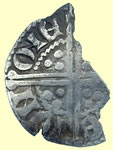 |
||
| 1923 George V milled silver half crown (30 pence) | 1247 Henry III hammered silver voided long cross penny Obv hENRICVS REX Rev E/ION /ONE - Moneyer Ion of Exeter mint |
||
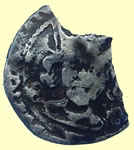 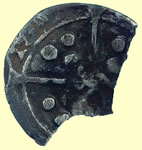 |
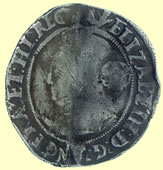 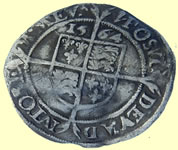 |
||
| 1461- 70 Edward IV hammered silver penny - Local (Durham) | 1564 Elizabeth 1st hammered silver half groat | ||
|
 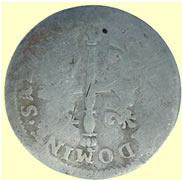 |
||
| Victorian silver 'Forget me not' ring | 1703 French Louis XIIII silver ECU coin Obv XIIII D G FR ET NA REX Rev DOMINE SALVM FAC REGEM |
||
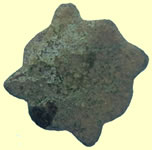 |
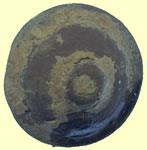 |
 |
 |
1600-1700 A copper-alloy cast mount. The mount is quatrefoil in shape with a cusp in each angle. |
1500-1700 mount | Medieval copper alloy belt mount | 1500-1700 mount |
 |
 |
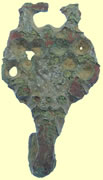 |
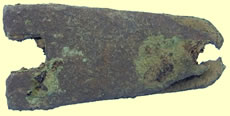 |
| 1500-1700 mount | Cast copper alloy mount of probable late medieval or post medieval date (1400-1600). The mount is sub-oval in plan and domed in cross section (D-shaped). | 16thC Tudor clothing fastener | Medieval buckle plate |
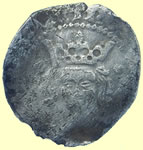 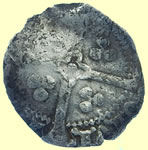 |
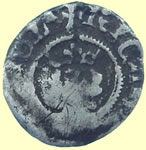 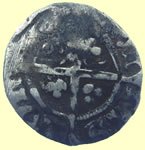 |
||
1413 - 22 Henry V hammered silver penny mullet and annualet by hair Quadrefoil with pellet at centre of reverse cross York mint |
1377-1399 Richard II hammered silver half penny Obv + RICAR**** ANGL' Rev CIVI/TAS/LON/DON- London mint |
||
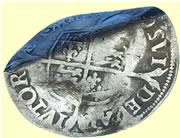 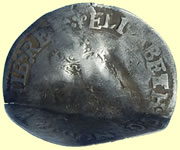 |
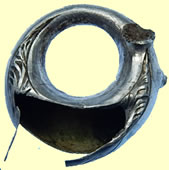 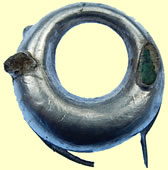 |
||
| 1558- 60 Elizabeth hammered silver groat | 20thC hollow gold ear ring | ||
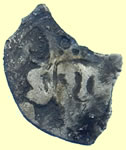 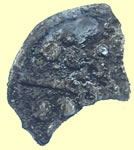 |
|||
| Victorian silver pin | Medieval hammered silvber penny Quadrefoil with pellet at centre of reverse cross York mint |
||
 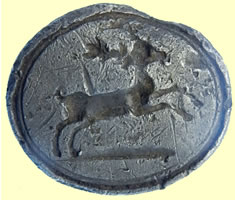 |
|||
| 17thC silver seal matrix - reported to museum as treasure | |||
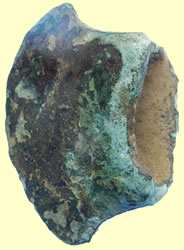 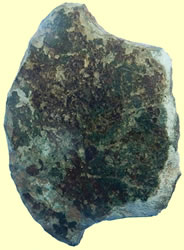 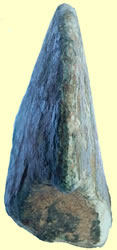 |
|||
| 850 BC Bronze Age scoketed axe head fragment | |||
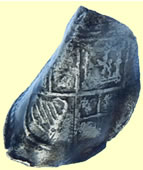  |
  |
||
| 1603 James 1st hammered silver half groat | 1247 Henry III hammered silver voided long cross half penny Rev VND/NIC - Moneyer Nicole of London mint |
||
  |
 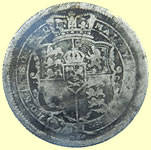 |
||
| 1573 Elizabeth 1st hammered silver half groat | 1816 George III milled silver sixpence | ||
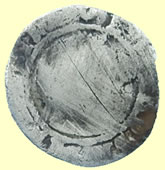 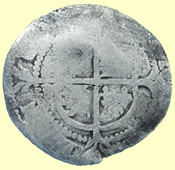 |
 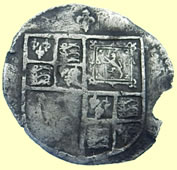 |
||
| 1600 Elizabeth 1st hammered silver half groat - O mint mark | 1604 -5 James 1st hammered silver half groat - Lis mint mark | ||
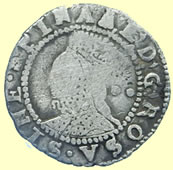 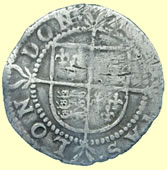 |
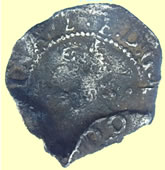 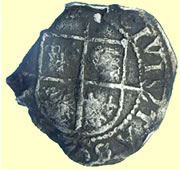 |
||
| 1582- 3 Elizabeth 1st hammered silver half groat - Bell mint mark | 16thC Elizabeth 1st hammered silver half groat | ||
  |
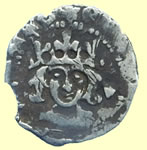 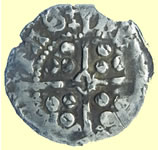 |
||
1247 Henry III hammered silver voided long cross half penny Rev ERT/NDE- Moneyer Robert of London mint |
1471 Edward IV hammered silver penny - double satire stops in reverse legend - D at centre of reverse cross Ob EDW ***** LIE Obv CIVI/TAS |
||
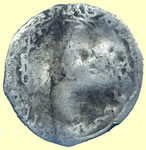 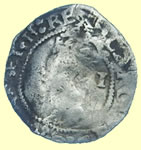 |
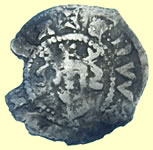  |
||
1641-3 Charles 1st hammered silver penny - mintmark 2 dots 'triangle and circle' King had left London and Parliament stuck these coins |
1314-17 Edward 1st hammered silver half penny - Type 13a Obv + EDWA ***A Rev CIVI/TAS/LON/DON- London mint |
||
 |
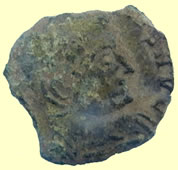 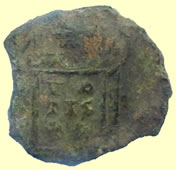 |
||
1793 Suffolk Sudbury Halfpenny Condor OBVERSE: Shield of Arms of Sudbury; dog, lion. MAY THE TRADE OF SUDBURY FLOURISH. REVERSE: PRO BONO PUBLICO 1793. EDGE: PAYABLE AT GOLDSMITH & SONS SUDBURY .XXX. |
4thC Roman bronze sent for ID On this one you sort of lucked-out. You avoided the corollary of "Murphy's Law of Ancient Coins" which says that if part of the legend or device is missing, it will be the part which would be most useful for determining who it is. In this case, we see AVG quite clearly on the obverse. Since the reverse, similarly, gives me just enough to see that the device is an altar with a vota inscription topped by a globe (above that, but not visible on this specimen, are 3 stars for Constantine and his two sons, Constantine Junior and Crispus). The legend was always some version or abbreviation of BEATA TRANQVILLITAS - "Blessed Peace" - and these were struck during the middle of the reign of Constantine I. Since the legend ends in AVG and not NOB C, etc, it must be Constantine I himself. Although Constantine was not the only Augustus at the time, his nemesis, Licinius, did not strike the Beata types - this was in the early 320's when Constantine and Licinius were openly at war with one another. This is an example of a more complete specimen in the name of Constantine's unfortunate son Crispus, Caesar: I don't seem to have a photo handy of a Constantine I Beata. Mark |
||
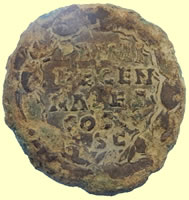 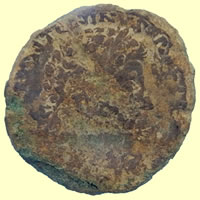 |
|||
Huge Roman with different obverse sent for ID This is clearly a Sestertius of Marcus Aurelius, 161-180 AD., datable to 171 AD. The reverse proclaims the celebration of his first Decennalia. As Pontifex Maximus of the state religion, it was incumbent upon the emperor to make certain vows, pledging to complete offerings which would be made in celebration of completing so many years (usually 5 or 10 for the first celebration) and undertaking vows, pledging to complete further offerings and ceremonies in hope and anticipation of the next span of years (again, usually 5 or 10). I'm quite familiar with this coin - here is an example of the same type from my collection:
Later in the Imperial era, so-called "vota" coins would become increasingly common. Mark |
|||
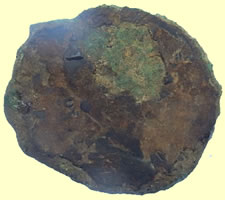 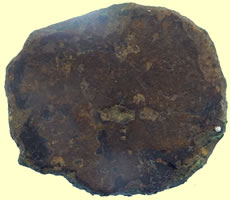 |
|||
2ndC Roman bronze sent for ID This one is tough - given the big flake laminated off the obverse, right over the face of the portrait, all I can do is hazard a guess. This might be Antoninus Pius, 138-161 AD. I can't make out any useful details on the reverse, so I am limited to making a guess based on what I think the outline of the portrait might have been. The beard (if it is bearded, I think so) is short - this was typical for Antoninus Pius. It was his adopted son and successor, Marcus Aurelius, who popularized "The Philosopher's Beard" - long and seemingly unkempt. His portrait starts off as Caesar under A. Pius with very curly hair and a very short beard - as his portrait develops and ages over the 40+ years he was first Caesar, then Emperor, his hair becomes noticeably sparse and his beard gets longer and wilder-looking - it is also possible that this is an earlier portrait of M. Aurelius, although the hair doesn't seem curly enough. Mark |
|||
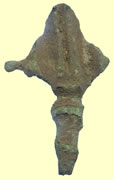  |
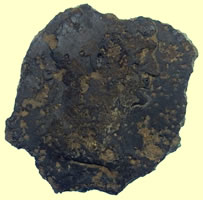 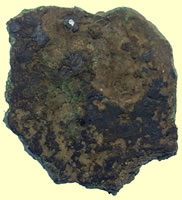 |
||
| 2ndC Roman fibular brooch | 2ndC Roman bronze sent for ID Not a lot I can say about this one. I believe the portrait is Hadrian, 117-138 AD. I can't make out any useful detail on the reverse. |
||
New 2014 Oct finds page 2
|
|||
 |
|||
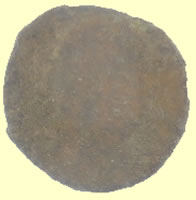
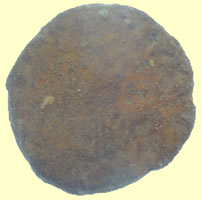

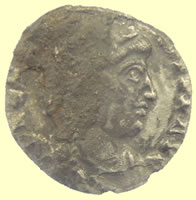
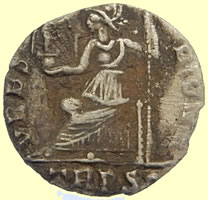
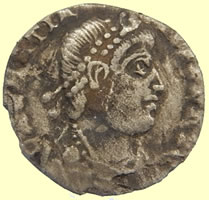
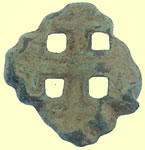

 'A badge for a Knight of the Order of the Holy Sepulchre in bronze and dating somewhere around C13/14th possibly very slightly later . This is a very scarce item and it relates to The Equestrian Order of the Holy Sepulchre of Jerusalem being a Catholic chivalric order of Knighthood that traces its roots to Godfrey of Bouillon, principal leader of the First Crusade. According to reliable sources in the Vatican and Jerusalem, it began in historical reality as a mixed clerical and lay confraternity (association) of pilgrims which gradually grew around the most central of the Christian holy places in the Middle East, the Holy Sepulchre or the tomb of Jesus Christ.This would have been a pin for a member of the order , there is a mark on the reverse where the original pin would have been fixed '
'A badge for a Knight of the Order of the Holy Sepulchre in bronze and dating somewhere around C13/14th possibly very slightly later . This is a very scarce item and it relates to The Equestrian Order of the Holy Sepulchre of Jerusalem being a Catholic chivalric order of Knighthood that traces its roots to Godfrey of Bouillon, principal leader of the First Crusade. According to reliable sources in the Vatican and Jerusalem, it began in historical reality as a mixed clerical and lay confraternity (association) of pilgrims which gradually grew around the most central of the Christian holy places in the Middle East, the Holy Sepulchre or the tomb of Jesus Christ.This would have been a pin for a member of the order , there is a mark on the reverse where the original pin would have been fixed '